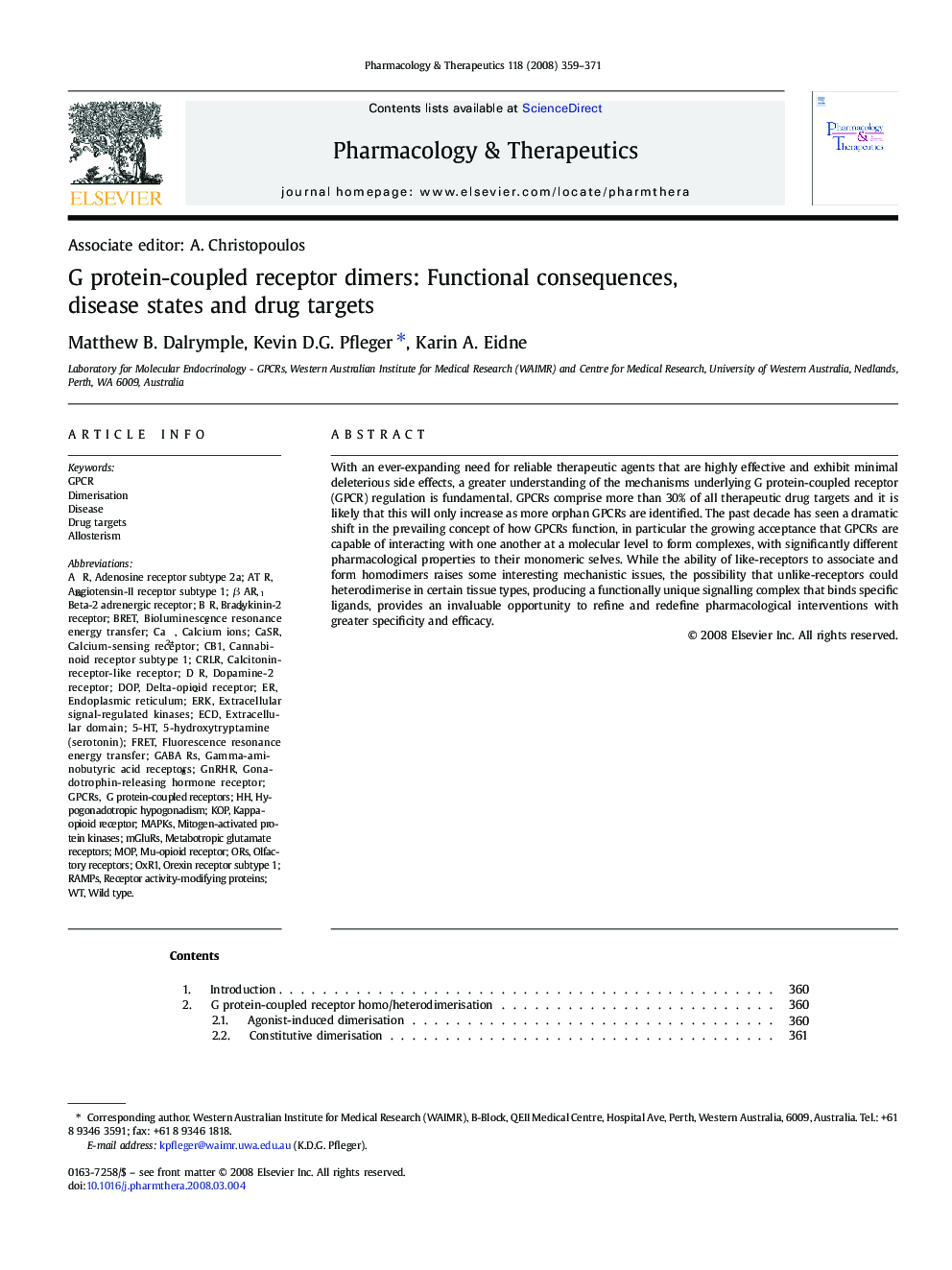| Article ID | Journal | Published Year | Pages | File Type |
|---|---|---|---|---|
| 2564111 | Pharmacology & Therapeutics | 2008 | 13 Pages |
With an ever-expanding need for reliable therapeutic agents that are highly effective and exhibit minimal deleterious side effects, a greater understanding of the mechanisms underlying G protein-coupled receptor (GPCR) regulation is fundamental. GPCRs comprise more than 30% of all therapeutic drug targets and it is likely that this will only increase as more orphan GPCRs are identified. The past decade has seen a dramatic shift in the prevailing concept of how GPCRs function, in particular the growing acceptance that GPCRs are capable of interacting with one another at a molecular level to form complexes, with significantly different pharmacological properties to their monomeric selves. While the ability of like-receptors to associate and form homodimers raises some interesting mechanistic issues, the possibility that unlike-receptors could heterodimerise in certain tissue types, producing a functionally unique signalling complex that binds specific ligands, provides an invaluable opportunity to refine and redefine pharmacological interventions with greater specificity and efficacy.
